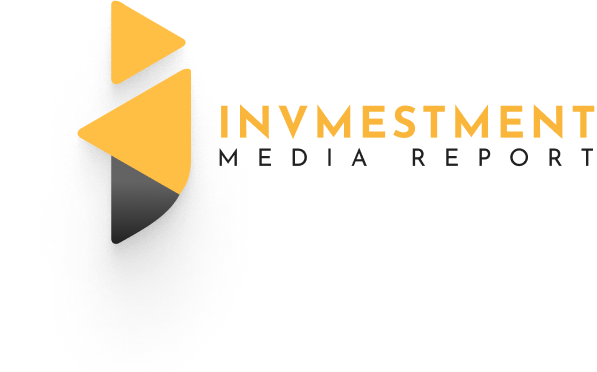

According to the American Chamber of Commerce, the official intent of the H1B visa is to help employers temporarily hire foreign professionals for specialty occupations that require specialized knowledge, such as those in STEM fields. The program helps U.S. companies fill labor shortages with skilled international talent.
Instead, data shows that the H1B visa program has become a cheap source of skilled labor for companies, taking jobs from U.S. citizens and suppressing wages, similar to how illegal aliens have affected construction, lawn care, roofing, and automotive repair. The difference is that the H1B program is taking jobs Americans spent four to six years at university preparing for, paying high tuition and taking on student loan debt that will now be difficult to repay.
The mainstream media downplay the numbers, focusing on the annual cap of 65,000 per year while ignoring the additional 20,000 visas available for those with a U.S. master’s degree or higher. But these 85,000 visas are not the full story. Universities and related nonprofit entities, nonprofit research organizations, and government research organizations are exempt from the cap and can submit H1B applications at any time during the year without worrying about the annual limits.
These cap-exempt employers include major universities such as Harvard, MIT, and Stanford, teaching hospitals like the Mayo Clinic and Cleveland Clinic, and research institutions including the Fred Hutchinson Cancer Research Center and the Scripps Research Institute.
It is also important to remember that the caps apply only to new visas. Existing H1B holders can renew, creating a cumulative total of between 500,000 and 600,000 H1B workers currently in the country.
The program has not achieved its stated goal of addressing a shortage of specialized labor, since most H1B holders work in routine computer or IT jobs. Since fiscal 2012, about 60 percent or more of all approved H1B workers each year have been in computer-related occupations. In 2023, the share was 65 percent. The top occupations were software engineers and developers, computer systems analysts, and IT specialists. By comparison, architecture, engineering, and surveying accounted for only about 9 percent of H1B workers in 2023.
There is a separate visa category, the O-1 nonimmigrant visa, for individuals who possess extraordinary ability in the sciences, arts, education, business, or athletics, or who have a demonstrated record of extraordinary achievement in film or television and have been recognized nationally or internationally for those achievements. Extraordinary ability in science, education, business, or athletics means a level of expertise indicating that the person is part of the very small percentage who have risen to the top of their field.
An O-1 beneficiary may qualify by receiving a major internationally recognized award, such as a Nobel Prize, or by providing evidence of at least three qualifying achievements, including nationally or internationally recognized prizes, membership in associations that require outstanding achievements, published material in major outlets about the beneficiary’s work, or original scientific, scholarly, or business contributions of major significance. The O-1 is sometimes called the celebrity visa because it is known for being used by figures like Justin Bieber, David Beckham, and Rihanna.
The O-1 truly is for extraordinary ability. Only about 19,500 were issued in FY 2024. Nobel Prize winners, Fields Medalists, world-renowned performers, elite athletes, leading scientists, and people at the absolute top of their fields qualify. A classic example would be Wernher von Braun, who designed the rockets that put humans on the moon, a level of expertise held by only a handful of people in the world.
The H1B visas are being granted to run-of-the-mill college graduates under claims that they are exceptional or filling needs Americans cannot. Meanwhile, if these applicants were truly exceptional, they would apply for the O-1, which has no cap.
The H1B holders are not exceptional people, and they are not filling job shortages. Multiple economic analyses conclude there is no broad STEM shortage. In computer and mathematical occupations, full employment corresponds to an unemployment rate of about 2 percent. At 3.4 percent unemployment, there are already too many educated, experienced STEM workers trying to find jobs; there is no shortage.
The academic market shows the same trend, with a clear oversupply of workers, especially Ph.D. holders in many disciplines. Overall data suggests the U.S. graduates more STEM students than there are STEM jobs, indicating a surplus of talent, not a shortage. A comprehensive review by the Bureau of Labor Statistics found the STEM labor market highly heterogeneous, with shortages in some areas and surpluses in others, disproving the claim of a single, universal STEM shortage.
While most H1B visas go to the computer science field, American computer science graduates now face 6.1 percent unemployment in 2025, nearly double the rate for philosophy majors. Computer engineering majors are at 7.5 percent unemployment. Meanwhile, fields tech leaders mocked for years are doing far better: philosophy majors have 3.2 percent unemployment, art history graduates sit at 3 percent, and journalism majors come in at 4.4 percent.
Data from SignalFire shows that the share of graduates from elite engineering programs working as engineers at major tech companies has collapsed from 25 percent in 2022 to just 11–12 percent in recent years, a drop of more than 50 percent in two years. The number of unemployed information-technology workers rose from 98,000 in December 2024 to 152,000 in January 2025. In 2024, there were 198,000 tech layoffs, and in 2025, about 100,000 tech workers have already lost their jobs. Meanwhile, between 240,000 and 260,000 H1B visa holders are working in this field.
Indian sources often frame Americans as lazy or uneducated and claim that without Indian workers the U.S. economy would collapse.
This narrative is deeply insulting, and blatantly racist. Vivek Ramaswamy damaged his political career by repeating the same rhetoric, acting as if Americans are refusing to take well-paid computer jobs. He argued that “Our American culture has venerated mediocrity over excellence for way too long… A culture that celebrates the prom queen over the math Olympiad champ, or the jock over the valedictorian, will not produce the best engineers.”
Ramaswamy also claimed that “top tech companies often hire foreign-born and first-generation engineers over ‘native’ Americans,” but the real reason companies prefer Indian workers is simple economics. The average annual wage in India is lower than the average monthly wage in the United States, so Indian tech workers are willing to accept salaries 20 to 30 percent below what Americans would earn and still come out ahead financially.
The H1B visa program has created the same effect at the upper end of the labor market that illegal aliens created at the lower end. Employers hire H1B workers for the same reason they hire illegal aliens: to save money. In doing so, they eliminate job opportunities for American workers and suppress salaries across white-collar fields.
The post The H1B Visa – They’re Taking White Collar Jobs appeared first on The Gateway Pundit.

